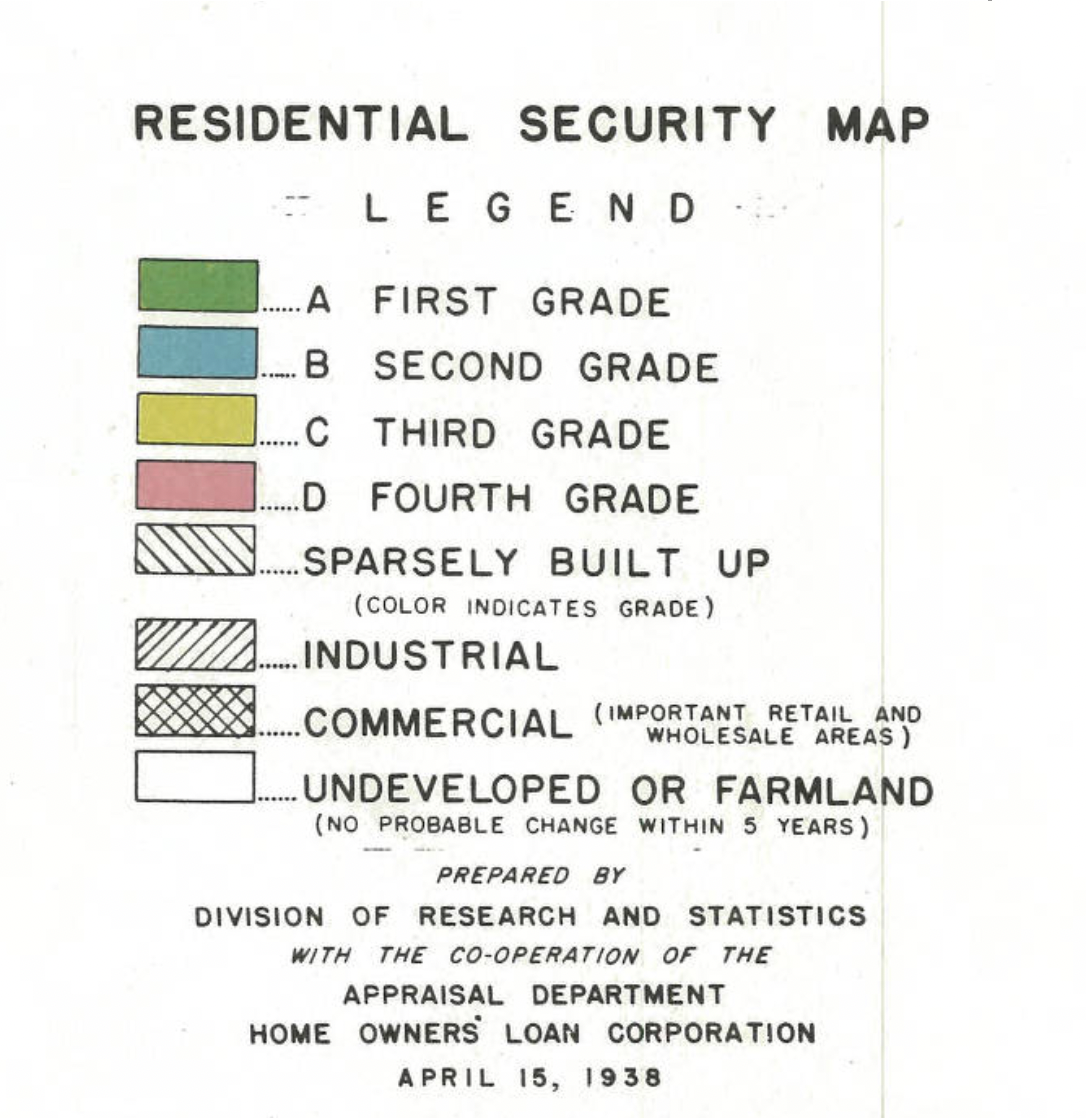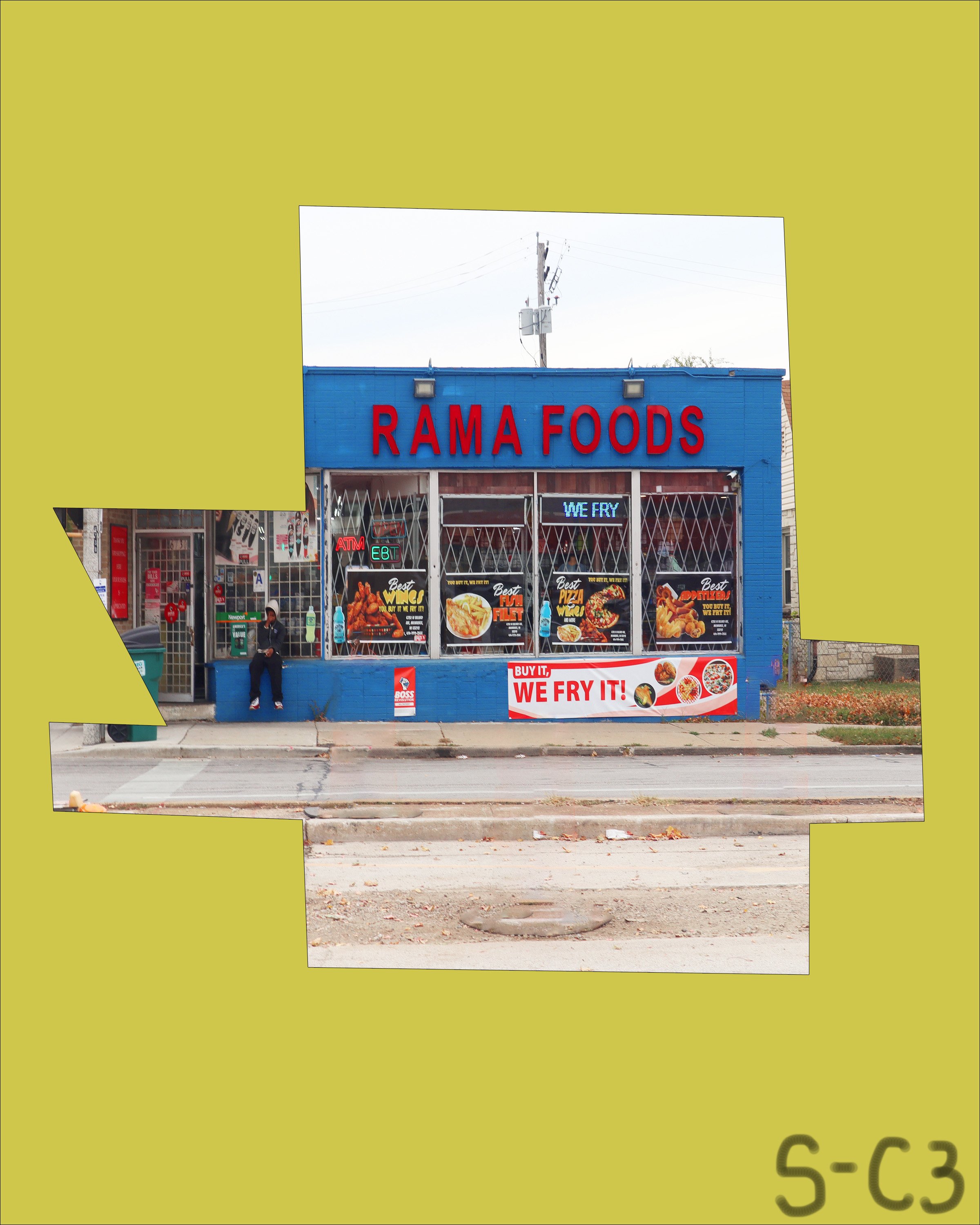ARTIST STATEMENT
Color(ed) Grading is a photographic series that explores themes of residential segregation, gentrification, and food security in cities by exploring the food options in neighborhoods. This photographic series criticizes the legacy of residential security maps (also known as redlining maps) by documenting the food options in neighborhoods based on their assigned color grade in the 1930s. It is evident that redlining’s legacy persists as well as gentrification through the unequal food access in majority Black neighborhoods and the transformation of neighborhoods that were once assigned grades C and D. The series is titled “Color(ed) Grading” as a play on words; it is a double entendre. Color grading is a process that photographers and filmmakers use in post production to enhance and change the colors of an image to fit the style and mood the image maker desires. On the other hand, Black people historically have been called “colored people.” These residential security maps graded neighborhoods based on the skin color of people who lived in them and used these maps to determine who to lend home mortgages and business loans to based on race.
Milwaukee, Wisconsin
Milwaukee County residential security map created by the Home Owners’ Loan Corporation (HOLC) in 1938. Can you match the photographs below with its respective neighborhood on the map?
Residential Security Map Legend
This legend shows how the HOLC graded neighborhoods. Grade A and B colored in blue and green were considered the best neighborhoods. However, Grade C and D neighborhoods were considered declining and the worst neighborhoods.
CREATIVE PROCESS
To create these images, I examined several Milwaukee neighborhoods from grades A to D on the 1938 residential security map. Using the neighborhood boundaries created by the residential security map, I traveled to these neighborhoods and documented the food options within them using a Canon EOS M-50 mirrorless camera with an EF-M 15-45mm Lens. I edited the photographs of the food options using Adobe Photoshop, cutting out the shape of the neighborhood on the 1938 residential security map and placing it on top of the image of the food option. Lastly, I wrote the name of the neighborhood in the bottom right corner of each photograph as it is written on the 1938 residential security map.
As you can see, neighborhoods that were once graded as A and B have the best food options for residents to shop at for groceries: Sendiks, Target, Trader Joes, Sentry Foods, Meijier, and Whole Foods. However, the neighborhood once labeled as “D4” which was considered a “hazardous” neighborhood in 1938, also has nice food options: Fresh Thyme Market, Pick ‘N Save, and Metro Market. This is a result of gentrification. This is an example of a neighborhood that was once considered undesirable that has transformed. Today all three of these neighborhoods are still majority white. If you look closely at the residential security map above, all 3 of these neighborhoods are between the Milwaukee River and Lake Michigan. It is evident that living near water is a luxury mostly to be enjoyed by residents who are not people of color.
Conversely, neighborhoods graded as C and D don’t have as many major grocery stores in their neighborhoods, but are mostly filled with corner stores, fast food restaurants, and discount supermarkets. These neighborhoods have a majority Black population. This shows that residents who live in majority Black neighborhoods in Milwaukee have access to less healthy food options compared to majority white neighborhoods in Milwaukee. If you look at the picture of the Rama Foods and the Fryerz, you can see that both are promoting fried food options to majority Black neighborhoods whereas these messages were not seen in majority white neighborhoods that were once graded A and B. Clearly, the legacy of redlining and residential segregation still disproportionately impact Milwaukee’s Black neighborhoods and Black residents today.
















